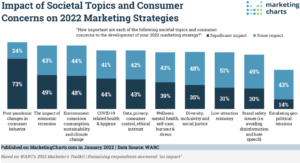Many of us who spend (probably too much) time online have probably seen chatter lately about ChatGPT, a new AI writing program. Many are pretty amazed about how well it can write. Naturally, that has led to all kinds of excitement about what it could mean for the future of advertising, journalism and literature. It’s also left a certain segment of people a bit terrified.
Namely, copywriters, journalists and writers of all types.
However, writers worth their weight in words don’t need to worry about our eminent demise at the hands of our robot overlords. There are many reasons why those with talent and creativity will always be able to offer value that AI simply cannot. Here are a couple of the many reasons why great writers can’t be replaced, no matter how many breathless panic pieces are written to make you think otherwise.
AI Can Only Recycle Ideas
When someone uses ChatGPT or any other, similar software, they face the same limits that all technology runs up against: it can only perform as well as the information it is given. That means that you describe what information you want it to find, but it will be unable provide any ideas beyond what’s out there already.
If you use AI, then you won’t be generating any new or disruptive ideas. All you’ll do is take what everyone has already done and shuffle the deck chairs around a little bit. But to find something new, to make connections that no one else has ever made and to communicate a unique selling proposition…you need a unique idea. That’s simply not available through AI right now.
Wit Does Not Compute
One problem many ChatbotGPT users have found involves humor. Or more specifically, the program’s complete and utter lack of it. This shouldn’t be a surprise for anyone who has watched movies in space ships and/or stations run by a computer, like 2001: A Space Odyssey, Moon or Flight of the Navigator (minus the scene where the spaceship’s computer does its Pewee Hermann impression, of course).
A humorous or cheeky tone is just more nebulous than what a computer can understand, it seems. Clever humor is often about playing off misdirection, understanding intangibles about the human experience, and once again, making a previously unseen connection between seemingly disparate ideas. Those just aren’t in the cards (chips?) for AI.
But Here’s a Secret: It’s Not All Bad.
It’s hard to admit, but copywriters can actually use AI to their advantage. It can be useful as long as it is considered a tool, not a crutch. In fact, it could free up copywriters to focus on creating even better creative concepts that a computer could only dream of. If computers did dream, that is.
Sometimes there’s a tedious task that’s mostly just searching out existing copy and organizing it. Have at it, bots! Need to gather a bunch of information, specs or data for long-form copy, like a whitepaper? Let the bots round it up for you. Wondering how a certain demographic might describe your client’s product or service? Or maybe a competitor’s? Release the bots!
Maybe the bot could provide a perspective that runs counter to your preconceived notions. Sometimes a perspective shift is valuable, and there are plenty of perspectives on the internet. Everyone has an opinion, and understanding a multitude of opinions is invaluable to a copywriter.
In many ways, when used correctly, AI could conceivably help us do better work than ever. Naturally, of course. No bots, no brain chips, no holograms. Just some creatives in a room with markers and whiteboards, making jokes that no computer could ever make.
If you want to talk to a real human about how your brand could benefit from the unique and boundlessly creative ideas that only an experienced marketing communications firm could provide, especially one that’s been doing it since before the internet was even a thing and phones couldn’t fit in a pocket, get in touch! We’d love to chat.

